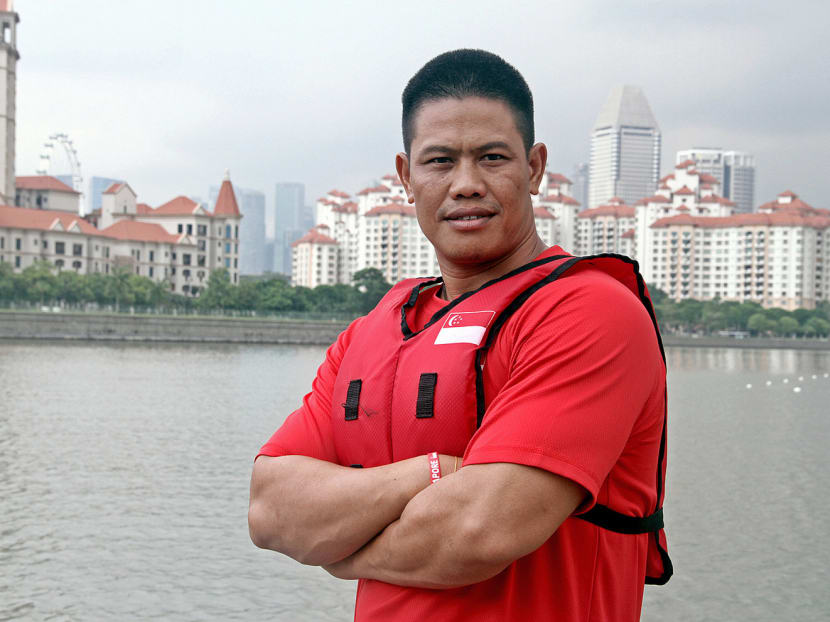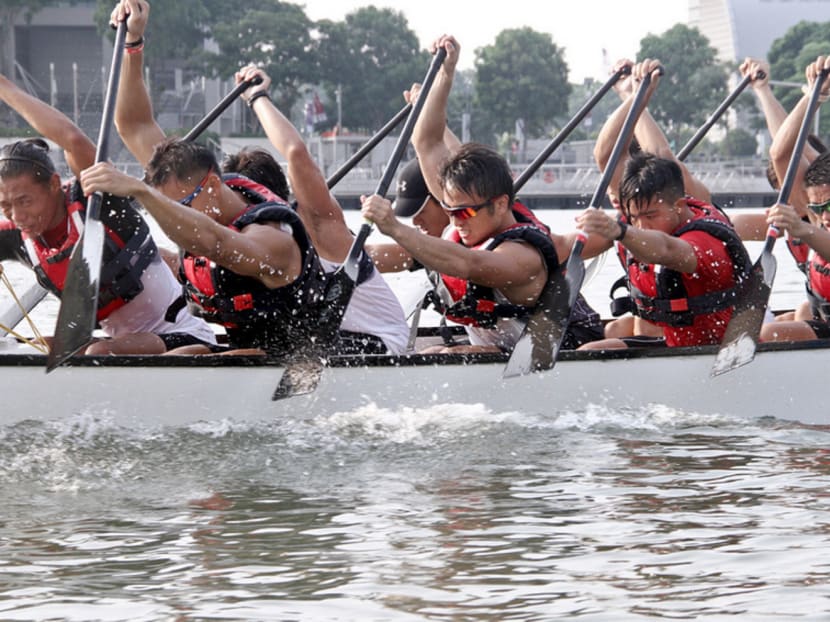Dragonboaters ‘good for SEA Games gold’
As Team Singapore enter the final stretch in their preparations for the 28th SEA Games ahead of the opening ceremony on June 5, TODAY takes a closer look at the 36 sports the nation’s 749 athletes will be competing in as they look to better the 50 gold-medal haul 22 years ago, the last time the biennial event was held here. The focus today is on the traditional boat race or dragonboat, gymnastics and cuesports.


As Team Singapore enter the final stretch in their preparations for the 28th SEA Games ahead of the opening ceremony on June 5, TODAY takes a closer look at the 36 sports the nation’s 749 athletes will be competing in as they look to better the 50 gold-medal haul 22 years ago, the last time the biennial event was held here. The focus today is on the traditional boat race or dragonboat, gymnastics and cuesports.
SINGAPORE — Without fail seven days a week, Naing Naing Htoo — or “992” as he is affectionately known by Singapore’s national dragonboaters — would be training his charges at Kallang Basin and Marina Bay.
In fact, the former assistant coach of the Myanmar national dragonboat team for three years has never been anywhere else since relocating here last July to become Singapore’s national head coach.
But exploring his current home is secondary to Htoo, who has stepped up the intensity of training from the get-go as they prepare for the upcoming SEA Games, where the men’s and women’s 12- and six-strong crews, respectively, will compete in the 200m and 500m events.
Htoo, who was also a national rower and dragonboater with the Myanmar national team, told TODAY he wants his charges to start winning medals regularly in the biennial event, and believes they can do so if they show enough hunger and commitment. The 38-year-old believes Singapore can claim “at least two gold medals” from eight events at the 2015 SEA Games.
“In Myanmar, kids start paddling since they were about six years old, and thus they became naturally good at that,” said Htoo.
“There are hundreds of national rowers, canoeists and dragonboaters who train full-time and live together in six or seven flats. It can be a challenge training the Singapore team because they are part-time, and have work and school distractions. But I see a lot of potential in them, and with regular attendances and hard work, they can excel too.”
At the 2013 SEA Games in Myanmar, Singapore’s women dragonboaters won a solitary bronze medal in the five-crew, 500m event, a first-ever SEA Games medal for the Republic’s women dragonboaters. It was also their first podium finish in the sport since the men’s team won the 10-crew, 500m event at the 1993 Games.
But heading into next month’s SEA Games, Myanmar remain the regional powerhouses and favourites, having swept 14 of the 17 golds at stake at the last Games in 2013.
To prepare for this SEA Games, Singapore’s 28-strong national squad took either an eight-month no-pay leave or a semester off from school to train, while staying together at the Dunman High School’s hostel.
The paddlers train twice daily, six days a week, from 7am to 10am and 7pm to 10pm — the men’s and women’s teams have different rest days in the week — at Kallang Basin and Marina Bay, which will host the SEA Games traditional boat race, or dragonboating, competition.
Htoo conducts time trials for the dragonboaters every Saturday, and is happy with their recent times as they head into the final straight of preparations. The times in the 10-crew, 500m races for both the men’s and women’s teams, for example, are within 0.05 seconds of the times the Myanmarese teams are clocking during training now.
“992 has the winning formula, so we listen very closely to his instructions,” said Singapore national dragonboater Shawn Tan, 25.
“His training focuses a lot on technique and we have made several changes to how we used to paddle. We also upped our endurance and learnt how to go all out for every stroke. He also made some of us lose five to 10kg, and that has benefited our race because a lighter boat means less effort to take it forward.”
Others, like female national dragonboater Shona Chan, 22, added that the mood in the camp is buoyant heading into the Games, and they hope a good result will help the future of the sport in terms of raising interest and awareness.
“In the past, we had not been performing well at the SEA Games, partly because dragonboat teams in the region are among the best in the world,” said Chan. “If we perform this time around, we can draw attention to the fact that we exist, are racing against the world’s best ... and that we are not some small, unknown sport here (in Singapore) that doesn’t perform and is not worth pursuing.”
Singapore’s national dragonboaters also want to deliver a strong showing as a tribute to five national dragonboaters who died after one of their boats overturned in Cambodia’s Tonle Sap river in 2007.
The mishap saw the team quit. However, a concerted effort by the Singapore Dragon Boat Association and its affiliates helped revive the team the following year.
“Since that mishap, we have always paddled in remembrance of them,” said Singapore national team manager Derick Tan. “With the SEA Games on home waters this time, it is a good opportunity for the current national men’s and women’s dragonboat teams to do their best and try to get a good result, as a form of tribute to those who have lost their lives.”





